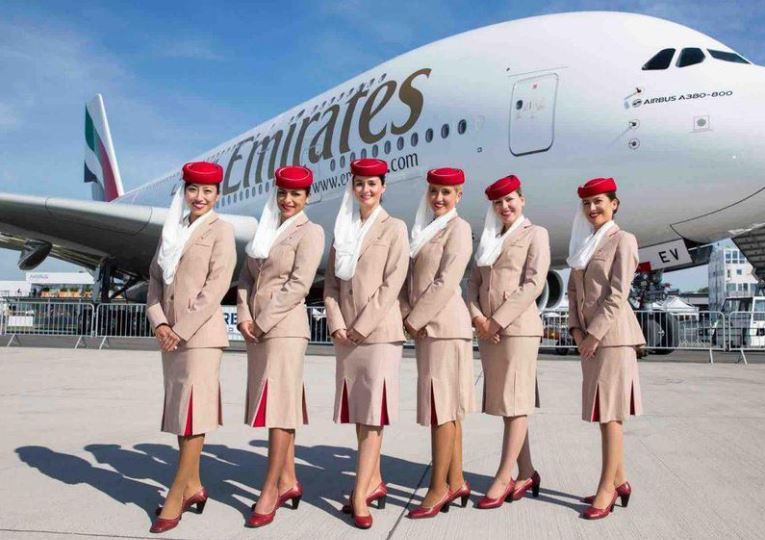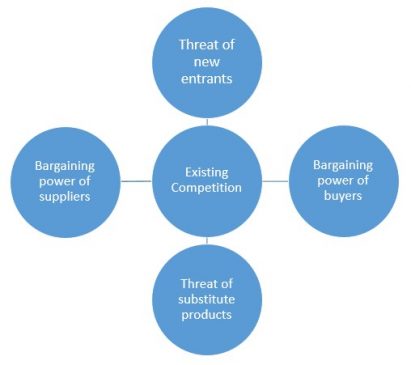Introduction of Emirates Airline
Emirates airline is a Dubai based airline wholly owned by Dubai Investment Corporation. Emirates is the largest airlines in the Middle East operating over 3,600 flights per week. This airline is considered as the global leader who started its operations with only two aircraft. They offer their customers the comfort zone with the latest and most efficient aircraft. Emirates is successful because of its strong marketing strategies which is why Emirates is the only airline to face a very less economic downturn in the last few years. Emirates has expanded its operations, they currently fly to over 155 destinations in more than 80 countries around the world. They are committed to consistently provide quality services and to be the best airline in the world.
Section- 1: The marketing environment of Emirates Airline
Understanding the marketing environment is very essential for Emirates airline. It helps to determine the issues and develop business strategies to survive in the market. There are two types of marketing environments:
- Macro-environment
- Micro-environment
1. Macro-environment (Opportunities and Threats)
The macro-environment consists of different external factors which impact business organizations as a whole. These factors are unorganized and organizations usually have less personal control to cope-up with these factors, commonly known as Opportunities and threats for the company. These factors can be any of bellow mentioned detailed list.
1.1 Demographic Forces of Emirates Airline
The demographic forces can influence the market segmentation of the Emirates. It is important for an organization to determine these forces which include country/region, age, education, household lifestyle, cultural characteristics. They are important because Emirates need to keep itself updated and continuous improving services providing organization.
1.2 Economic Forces of Emirates Airline
Economic forces include different key-factors that can impact the Emirates services and consumer’s decision-making processes, these forces may include interest rates, exchange rates, inflation, taxes, demand/supply. The economic factors can pose different opportunities for Emirates Airways, The revenues are increasing every year which is a clear opportunity for Emirates Airways to invest in buying different new aircraft and hire different special trainers from different countries which can train their employees in order to create opportunities in the form of business growth and development.
1.3 Natural/ Physical Forces
Natural and physical forces impact the Emirates but have not too much influence to be counted as a big factor. But in case of rough weather conditions and natural disasters, company can be influenced with these forces.
1.4 Technological Forces
Rapidly changing environment is always an opportunity or threat for the Emirates. As, the company is working on the concept of providing best quality services and use of latest technology.
1.5 Political & Legal Forces
Political and legal forces include the influencing party and visionary relationship maintained environment for the organization with changing in political and legal environments. The legal factors can change the business game rules which can either take business downwards or upwards. Emirates Airways is a Middle East airline, Donald Trump and its administration recently imposed a legal act in which they have banned the Muslim Citizens to enter the US which has decreased the ratio of passengers from Muslim countries in US Markets. This is a threat to Emirates Airline, which can bring their sales downwards because most of the passengers who travel in Emirates airlines belong to Muslim countries.
1.6 Social & Cultural Forces
Sociocultural factors are very helpful in formulating a business marketing strategy which can affect the buying behavior of the consumers. These forces include lifestyles, customs, cultural aspects, reference group, family group, role, status, education etc.
A. The framework that apply to the macro-environment of emirates airways
To discuss the macro-environment of Emirates Airways, I chose Economic framework to define the position of the organization.
B. Economic factors – Emirates airline
Emirates Airline currently have a good stable economic condition. UAE government has invested a lot in its two airports: Dubai & Abu Dhabi. The results are quite clear from this development which has increased the number of daily flights and increased the profit margin. Emirates have faced many economic challenges but they are sure they can surpass these challenges as they did before. Emirates airline is one of the few airlines which had faced very little downturn ratio of their investments & profits. The profits of Emirates Airline are increasing every year with the number of passengers increasing. If we measure the economic stability, we can see the rise in 73.5% improvement as compared to the last year, Net profit of $429 million was recorded. This represents that Emirates Airways economic condition is improving day by day with its investments in different airlines. This is very sure that Emirates Airways have been increasing its profit margins. Which is why it has been able to buy such expensive aircraft with the help of this airline, Dubai tourism is being promoted which is a contribution in the economy.

2. Microenvironment of emirates airways (Strengths and Weaknesses)
Microenvironment factors are those factors which determine the organizations resource availability and helps in planning and preparation of business which include the long-term strategy development. These micro-environment include:
2.1. Customers of Emirates
Emirates Airline values its customers. Its fixed cost strategy for its clients. The cost of any travel is predefined. For Emirates Airways the customers are the valuable assets whom they provide quality services in best value.
2.2. Employees of Emirates
According to 2015, Emirates Airline has more than 20,000 employees who manages the whole network of airline. The employees are included in the top priority of Emirates Airline. Different allowances and incentives schemes are for employees of Emirates Airline.
2.3. Distribution Channels & Suppliers
There are different ticket distribution authorized franchises which allows easy ticket buying. Emirates Airline has their application (Both android & iOS) which allows its customers to buy tickets online or from nearby franchise.
2.4. Investors
Emirates is one of the biggest airlines of the world, Emirates Airline itself is investing in different other airlines, Emirates Airline has a market share of 39%. However, Emirates Airline have minority equity investments in different participating airlines. Moreover, different investors are entering in the market which can be a threat.
3. Conclusion of SWOT analysis of emirates Airline
SWOT Analysis the essential part to determine the internal and external factors which can help us understanding the rivals and comparing them in terms of strengths, weaknesses, opportunities and threats.
- STRENGTHS: Unique Business Model, Luxury Aircraft, Strong trade name
- WEAKNESSES: Weak diversification approaches used, Limited market range
- OPPORTUNITIES: Expansion in new market: Russia, Europe, Updating its technology.
- THREATS: Rival Companies like Etihad Airways, Qatar Airways, Lufthansa, Fly Dubai, Malaysia Airlines, Turkish Airlines, Saudi Arabian Airlines, Cathay Pacific, and PIA, also the fuel costs might increase as a threat to Emirates airline.
Section- 2 (Positioning and Targeting)
1.Market segmentation of emirates Airline
Every customer has a different taste, So the concept of market segmentation is used which allows the organizations to divide the customers into groups according to their needs and wants. Market segmentation enables the organizations to develop such strategies for group of customers so that they can satisfy every group according to the service standards.
Emirates Airline segments its customers following the traditional approach. Their market segmentation is as follow:
- Focuses on business travelers and price-sensitive travelers.
- To increase its market and expanding their business they are focusing on segment based on consumer loyalty.
- Emirates Airline use psychographic segmentation in order to divide the customers depending on their lifestyle, opinions, interests, behavior and attitude of customers
I. Target users:
Value-seeking fliers, Not very price-sensitive, Upper middle and Upper-class fliers seeking comfort and flying experience..
II. Preferences:
Two major groups of business and leisure travelers, they both differ in preferences of services. Hence, business traveler is given additional importance as compared to leisure travelers. This preference strategy is used by Emirates Airline in order to ensure services standards.
III. Demand nature:
Emirates Airline provide more space and services to their business travelers which include internet facility, telephone connections, work-space. While leisure travelers demand more entertainment features.





